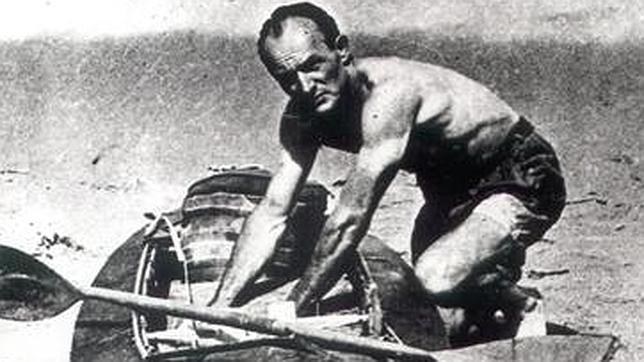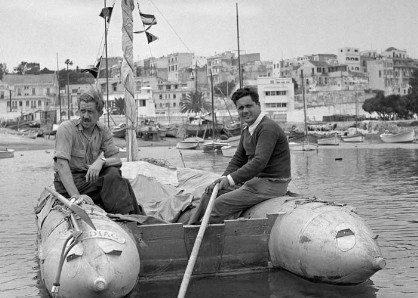
A Little Fact Checking Seems in Order
We rarely stray beyond sailing at Latitude, but today we lost our path thanks to a sometimes unintentionally funny and sometimes factually inaccurate story in the New York Times. The story is about 48-year-old Wave Vidmar, who apparently is soon to depart Horseshoe Cove in Sausalito for 2,200-mile distant Hawaii aboard a double-ended kayak.
In the first sentence, the Times wrote that if Vidmar succeeds, it will be the longest voyage of its kind. And later in the article, a member of Vidmar’s staff tells the Times, "The expedition will redefine what can be achieved with solo open ocean travel."
These claims are kind of funny because in the very same article the Times reports that in ’67, Edward Gillet kayaked from Monterey to Hawaii, arriving 63 days — and 25 lbs — later. So how can Vidmar’s proposed trip to Hawaii really be any longer than Gillet’s? And how could Vidmar possibly "redefine" what’s already been done?
Had the Times done a little research, they would have also discovered that back in ’51, Dr. Hannes Lindemann kayaked across the Atlantic in a Klepper inflatable kayak, using a model which is still in production today. But that’s nothing compared to the accomplishments of Oskar Speck. Over a course of seven years in the ’30s, Speck used a foldable kayak to make it all the way from Germany to Australia. If anybody is going to "redefine open ocean solo travel," they are going to have to deal with Speck’s legacy.

We don’t want to rain on Vidmar’s planned parade — after all, he has 100 times the courage we have — but we would like to provide some context to what he is planning to do. First of all, did you know that more than 300 people have rowed across the Atlantic Ocean? And that one man ‘swam’ across, sleeping at night in his little boat? And that another fellow — obviously French — drifted across the Atlantic on a mooring ball? And that it’s farther across the Atlantic than it is from San Francisco to Hawaii.
Indeed, drifting is the main moving force for many of these small boat ocean accomplishments. Lindemann, for instance, went with the wind and current across the Atlantic. Dr. Alain Bombard did the same, when he took off to prove his inflatables were seaworthy. But we’ll give Bombard bonus points, because he set off with nothing more than a sextant and very little food.

Indeed, one wonder of Gillet’s 63-day ‘paddle’ to Hawaii is that it took so very long. Our old friend George Sigler who, as the owner of the long-gone Survival & Safety in Alameda, founded the Singlehanded TransPac, once drifted from San Francisco to within 60 miles of Hawaii in just 56 days on a big sloppy raft. And that included getting rolled the first night and losing virtually all of his and his partner’s supplies.
If a kayaker wants to impress us as having paddled — as opposed to drifted across the Pacific — s/he will have to do it from Hawaii to San Francisco.
Three other phony factual claims in the Times had us scratching our heads: 1) That Vidmar could face seas up to 45 feet high. Right. Although we suppose that could be true if he paddled to the North Shore of Oahu and joined the surfers waiting for the first big swell of winter to hit. 2) That if he needs to be rescued, it could take days for help to arrive. We suppose that would be true if his EPIRB broke and/or the AMVER rescue system suddenly failed. And, 3) the trip will be about 3,000 miles. Does Vidmar plan on going to Hawaii by way of Cabo San Lucas?
And now, back to sailing.

Thank you, thank you, thank you. One small correction to your correction: Ed Gillet kayaked to Hawaii in 1987. And before Speck and Lindemann, there was Franz Romer.